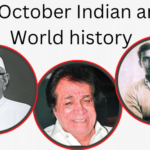World Aids Day is observed every year on 1 December. It is observed to raise awareness of the AIDS pandemic caused by the spread of HIV infection and mourning those who have died of the disease. The acquired immunodeficiency syndrome (AIDS) is a life-threatening condition caused by the human immunodeficiency virus. The HIV virus attacks the immune system of the patient and reduces its resistance to other ‘diseases’.
There are several reasons through which AIDS can affect a person. It can be contracted through body fluids like blood, semen, pre-seminal fluid, vaginal and rectal fluids, and breast milk of an infected woman. The deadly disease can also spread through unprotected sex with an infected person. Sharing injection needles, razor blades, knives among other things with an infected person can also be a reason for contraction of the disease.
There is continuous fight with the virus at numerous fronts. UN Secretary-General António Guterres’ message on World AIDS Day is as follows:
On this World AIDS Day, we focus attention on the inequalities that drive HIV and AIDS. It is still possible to end the epidemic by 2030. But that will require stepped-up action and greater solidarity. The United Nations General Assembly recently adopted a bold new plan to accelerate progress, including new targets for 2025. To beat AIDS — and build resilience against the pandemics of tomorrow — we need collective action. That includes harnessing the leadership of communities to drive change, combating stigma, and ending discriminatory and punitive laws, policies, and practices.
Theme of World AIDS Day 2021
This year, with a special focus on reaching people left behind WHO and its partners are highlighting the growing inequalities in access to essential HIV services. The theme of World AIDS Day 2021 is “End inequalities. End AIDS”. On 1 December 2021, WHO is calling on global leaders and citizens to rally to confront the inequalities that drive AIDS and to reach people who are currently not receiving essential HIV services. The theme of World AIDS Day 2018 is “Know Your Status”.
On the similar line, the UN first celebrated Zero Discrimination Day on 1 March 2014, after UNAIDS, a UN program on human immunodeficiency virus (HIV) and Acquired Immune Deficiency Syndrome (AIDS), launched its Zero Discrimination Campaign on World AIDS Day in December 2013. Nobel Peace Prize Winner Daw Aung San Suu Kyi, while being part of the day commented
People who discriminate narrow the world of others as well as their own. I believe in a world where everyone can flower and blossom.
History of World AIDS Day
Bunn, a former TV broadcast journalist from San Francisco, suggested 1 December to be the date for World AIDS Day. He believed that World AIDS Day would get more coverage and engagement by western media since it’s just before Christmas. As a result, World AIDS Day took shape and first observed on 1 December 1988.
Quick facts about AIDS Pandemic
Here are few quick facts which will elaborate the number of AIDS patients across the globe.
- Around 37.7 million people living with HIV in 2020
- 680,000 people died from HIV-related causes in 2020
- Around 1,5 million people were newly infected in 2020
- 73 % of people living with HIV received lifelong antiretroviral therapy (ART) in 2020
- 28.2 million people were accessing antiretroviral therapy as of 30 June 2021.
- 53% of all people living with HIV were women and girls.
- 1.7 million children (0–14 years) are living with AIDS.
- About 6.1 million people did not know that they were living with HIV in 2020
There are some positive developments because of many awareness initiatives by various organisations. Since 2010, new HIV infections have declined by 31%, from 2.1 million [1.5 million–2.9 million] to 1.5 million [1.0 million–2.0 million] in 2020. Also, there is drop in number of cases among children. Since 2010, new HIV infections among children have declined by 53%, from 320 000 in 2020 to 150 000 in 2010.
Observer Voice is the one stop site for National, International news, Editor’s Choice, Art/culture contents, Quotes and much more. We also cover historical contents. Historical contents includes World History, Indian History, and what happened today. The website also covers Entertainment across the India and World.
Follow Us on Twitter, Instagram, Facebook, & LinkedIn










